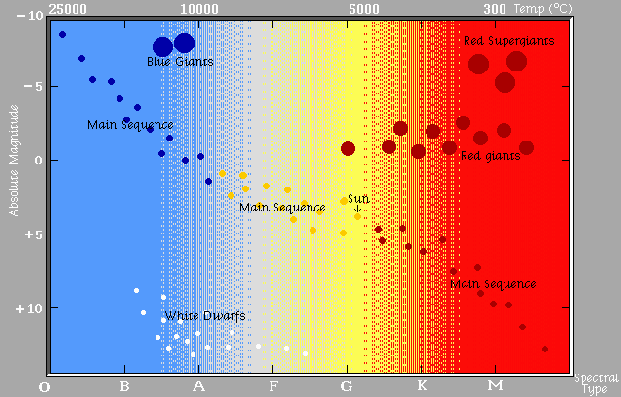
Almost every star in the sky falls along the line extending from the upper-left to the lower-right corners of the graph; these are called the main sequence stars. The existence of this main sequence is exactly what we should expect: the hotter the star the brighter it should be and these fall at the top-left end of the sequence. The Sun is typical of a main sequence star.
Set apart from the main sequence, near the upper right-hand corner of the Hertzsprung-Russell diagram fall stars that are cool and very bright. Being cool, each square mile of the star emits only a moderate amount of light so they can be bright only if the truly gigantic: they emit mostly reddish light. Almost every reddish-appearing star in the sky is a red giant; Betelgeuse Antares and Arcturus are well-known examples. They are thousands of times larger than the stars in the main sequence; they are the largest stars in the universe.
The third group of dots in the lower left-hand corner of the Hertzsprung- Russell diagram represents stars that are both dim and hot. The only way such a hot star can be so dim is if it is small. These stars are typically about the same size as the Earth, and in view of the blue-white light emitted from their hot, tiny surfaces they are called white dwarfs.

Figure 7 The Hertzsprung-Russell Diagram
A Hertzsprung-Russell diagram is simply a graph on which the luminosity's of stars are plotted against their surface temperatures. Every dot represents a star whose brightness and temperature have been measured. The fact that the data fall into three distinct regions means that there are three very different kinds of stars in the sky.